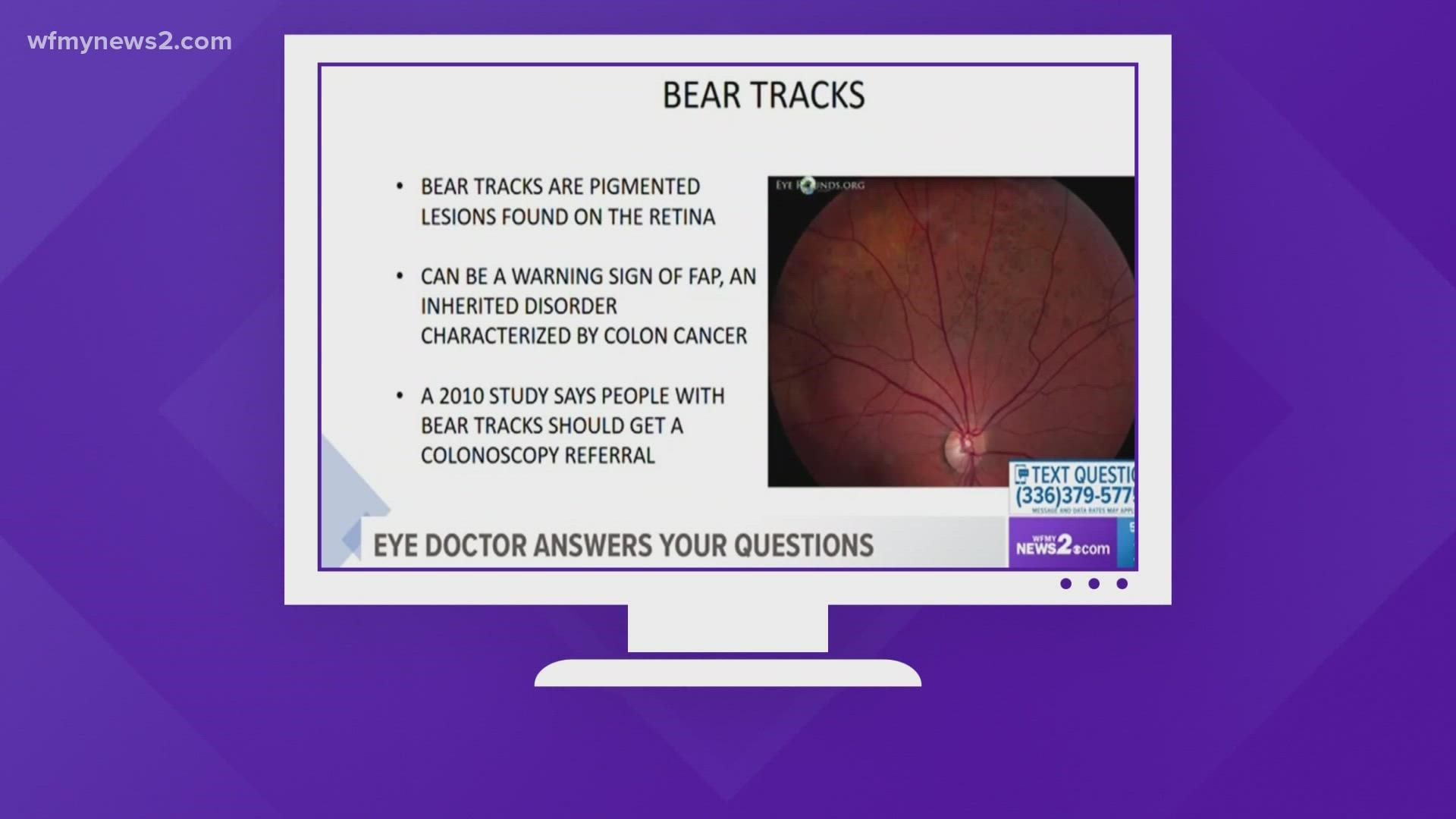GREENSBORO, N.C. — When our own Julie Luck has a routine colonoscopy and found she had colon cancer, it was a surprise. She had no family history, no symptoms, and leads a healthy lifestyle.
Julie has gone through two chemo cycles and has two more to go. She is constantly encouraging people to get screened.
Along with a colonoscopy, we recently learned you'll want to also get a routine eye exam.
“When we're talking about colon cancer, there's a condition called Familial Adenomatous Polyposis or FAP. It is a hereditary disease that leads to colon cancer,” said Dr. Rachel Wruble, an optometrist.
During an eye exam, your doctor will complete a retina examination looking at the inside of the eye. FAP shows itself in the retina by leaving spots on the retina that look like bear tracks.
The paw prints in the back of the eye can point to colon cancer that can develop as early as the teenage years.
Just recently Dr. Wruble had a 35-year-old patient with these paw prints. She sent him for a colonoscopy, and he was diagnosed with Stage 1 colon cancer.
“We can see so much from looking in the back of the eye from diabetes to blood pressure damage, cholesterol, and these bear tracks that can be associated with colon cancer,” said Dr. Wruble.
How often should you get an eye exam?
Children should get their first eye exam between six and twelve months, then again at three years old and at five years old. After, they need to get one every year.
Adults 20 to 40 need can go every 2-years unless the dr. recommends you need one every year.
Adults over 40 need an exam every year.

